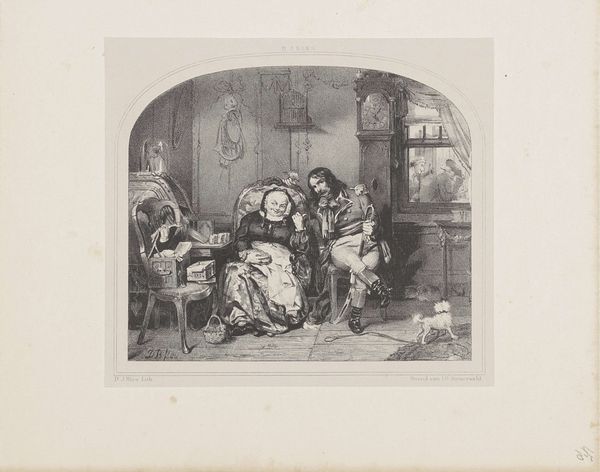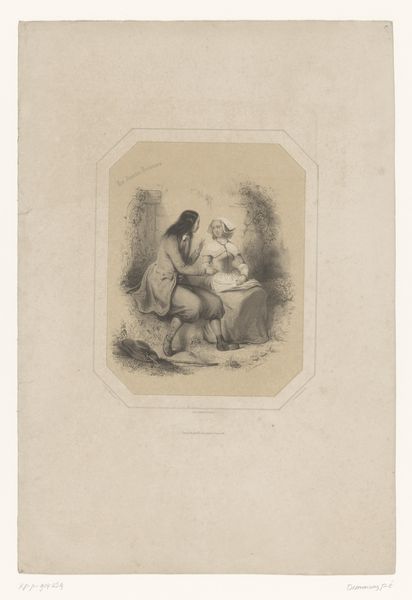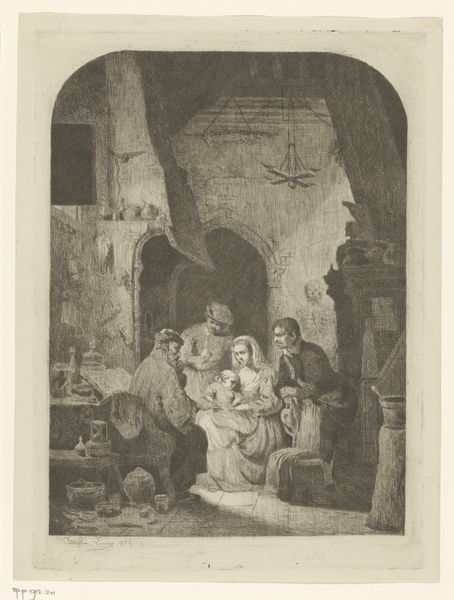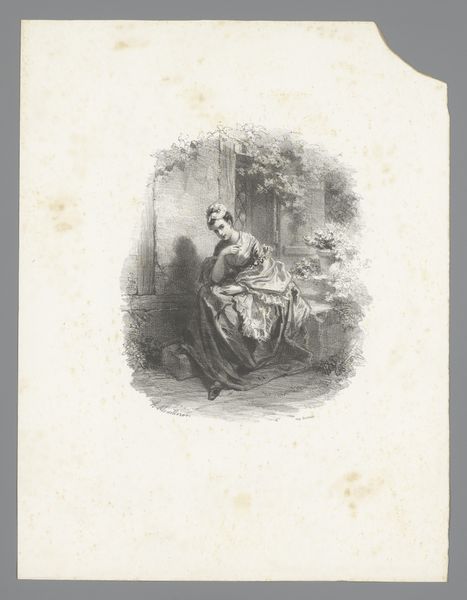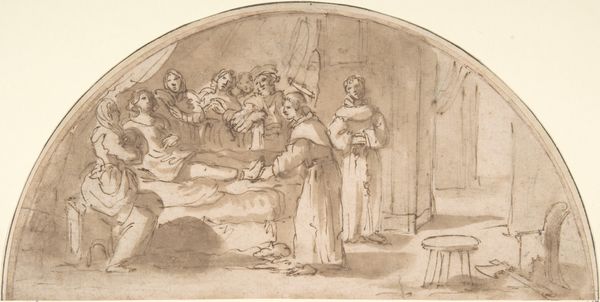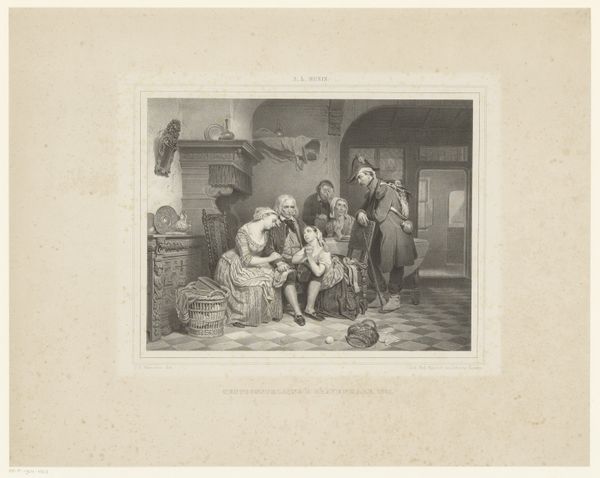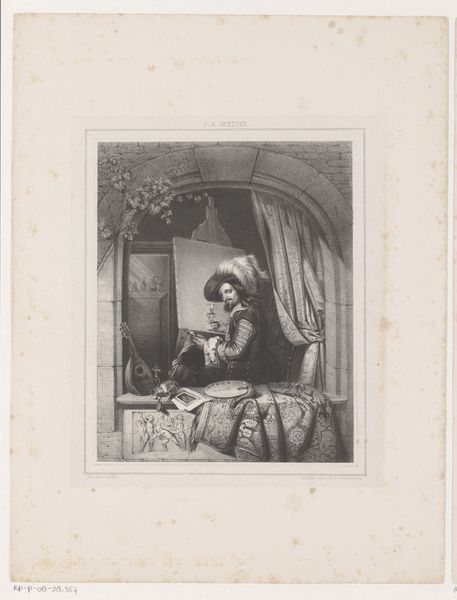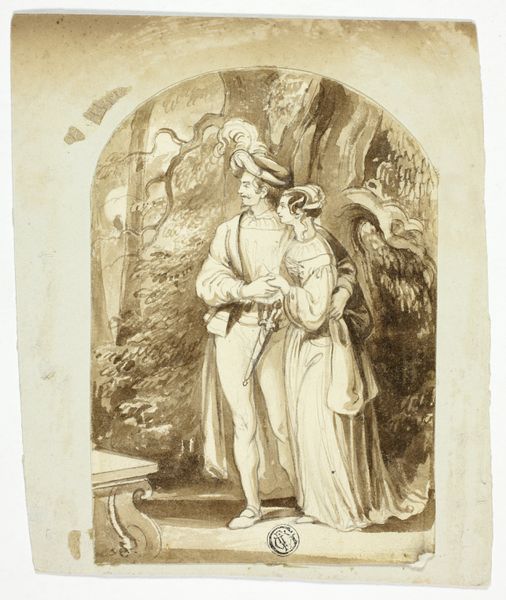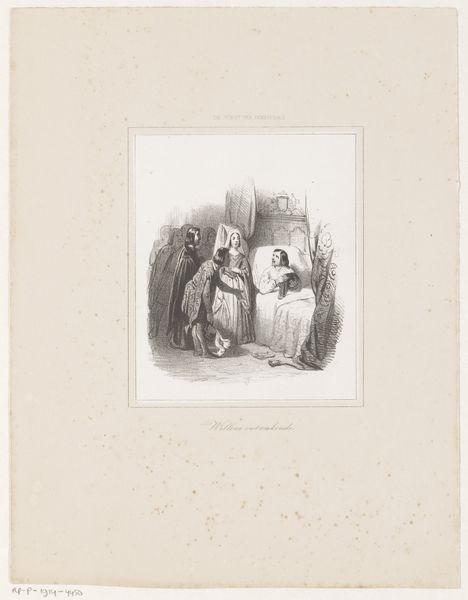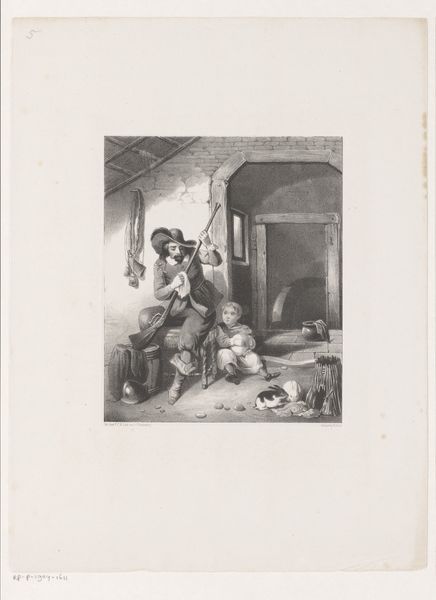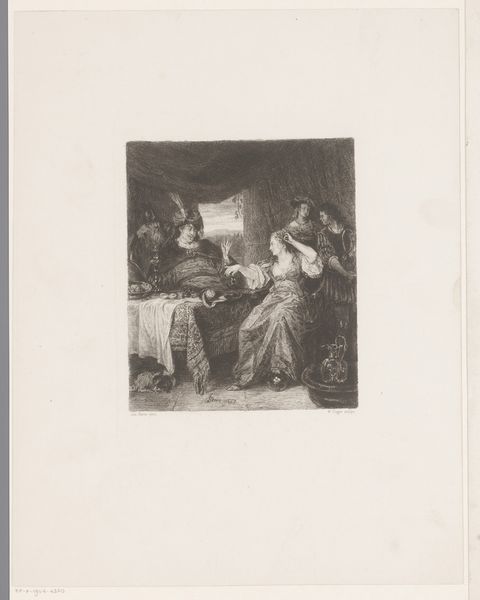
drawing, charcoal
#
drawing
#
narrative-art
#
charcoal drawing
#
genre-painting
#
charcoal
#
charcoal
#
realism
Dimensions: sheet: 43.6 × 39.6 cm (17 3/16 × 15 9/16 in.)
Copyright: National Gallery of Art: CC0 1.0
Editor: So, this is Felix Octavius Carr Darley's "The Squatter's Death," made with charcoal between 1859 and 1861. It's such a moving scene. It feels very intimate and melancholic, but also strangely... staged? What do you see when you look at this drawing? Curator: I see a narrative carefully constructed, yes. But let's look at it materially. Darley chose charcoal. Why? Consider its availability, its cost compared to oils. Charcoal speaks to immediacy, to reproduction, to a wider potential audience through prints. This isn’t some wealthy patron’s commission, but something intended, potentially, for mass consumption. Editor: Mass consumption? But it's such a tragic scene, the death of someone who looks like a pioneer… Curator: Exactly! Consider the romanticism of the frontier, the narratives being woven about westward expansion. This "squatter" – what does that word even *mean* in terms of land ownership and power dynamics? This image isn't just about a man's death; it's about labor, land, and the very specific ways in which those concepts were being negotiated, consumed, in mid-19th century America. The rough charcoal itself mirrors the perceived roughness of frontier life, yet it's also carefully controlled, narrativized for viewers back East. Look at how the family, rendered in shadow, encircles him, drawing the eye, demanding an emotional response. Editor: So it’s less about the individual tragedy and more about how that tragedy gets used, commodified even? I never thought about it that way before, thinking about who gets the benefits from telling such stories. Curator: Precisely. What narratives does it perpetuate? Whose labor goes unseen? And who profits from selling that romantic, ultimately very selective, vision of the West? The very materials point us toward these critical questions. Editor: That gives me so much to think about. Looking at art through the lens of its materials really changes the story. Thanks! Curator: My pleasure. Always consider the material reality of art; it has much to tell us.
Comments
No comments
Be the first to comment and join the conversation on the ultimate creative platform.
